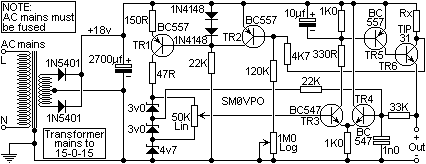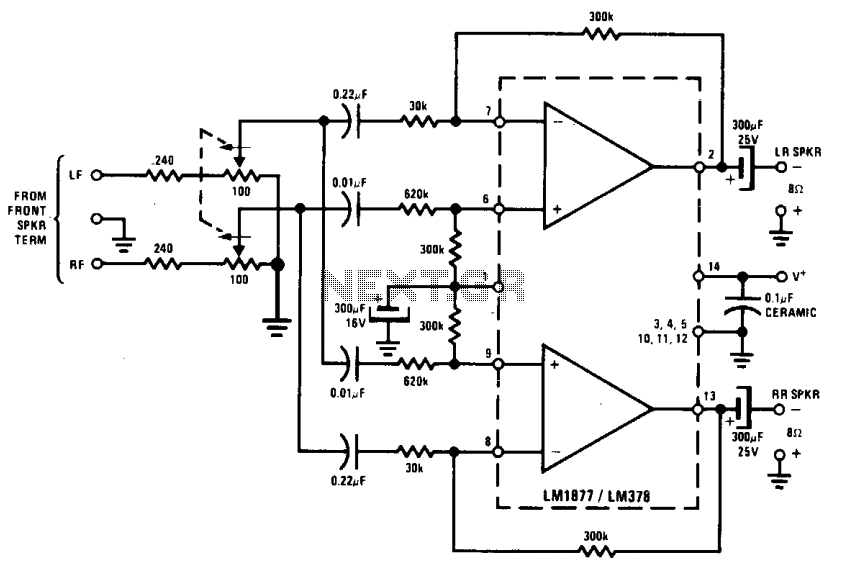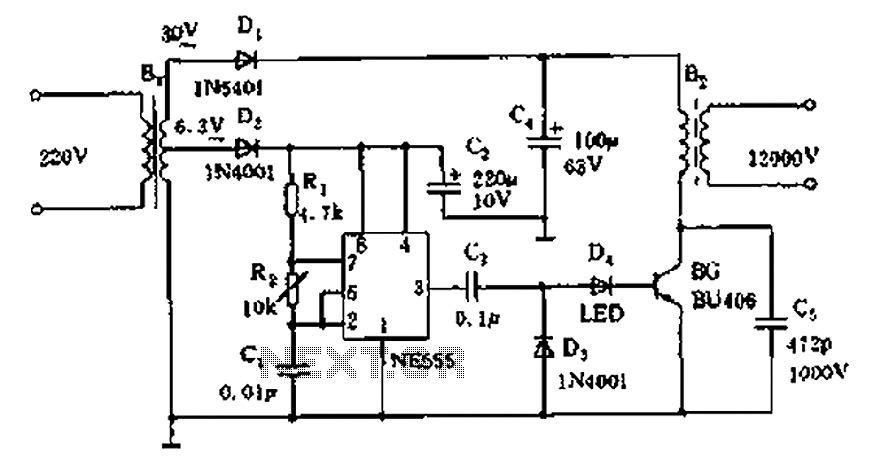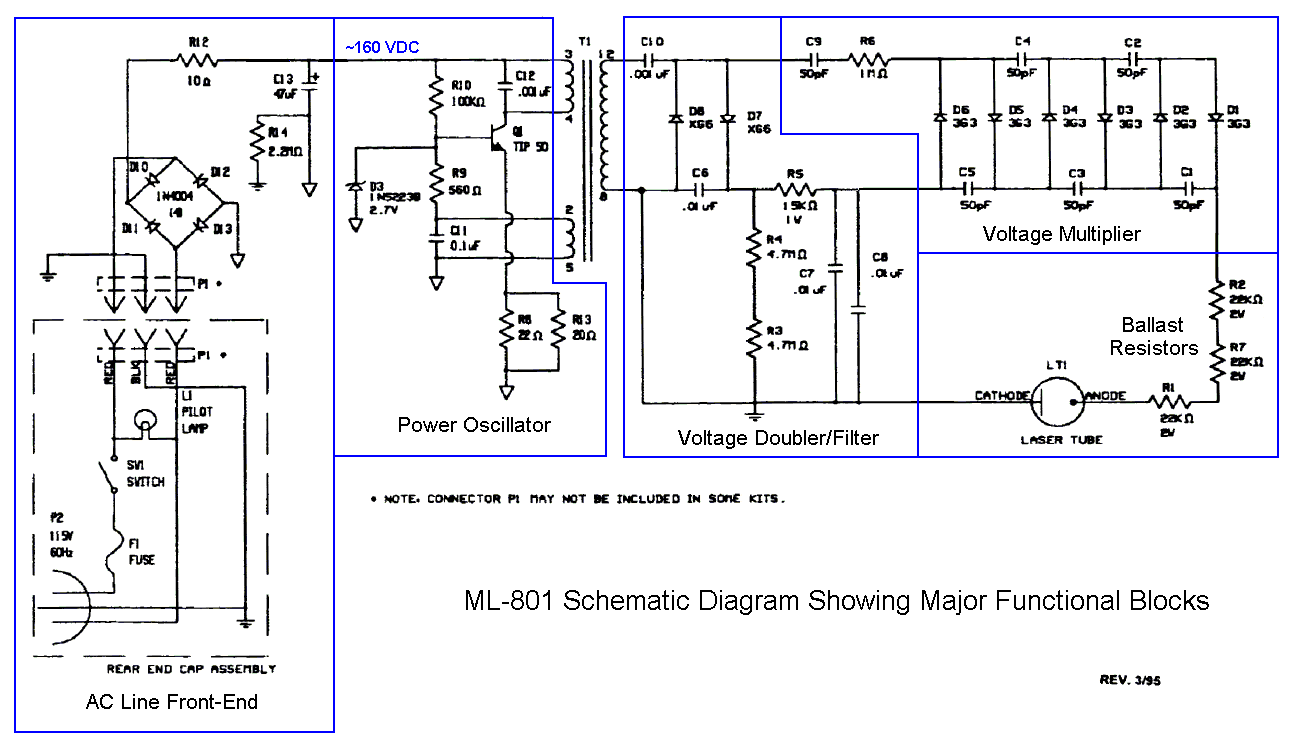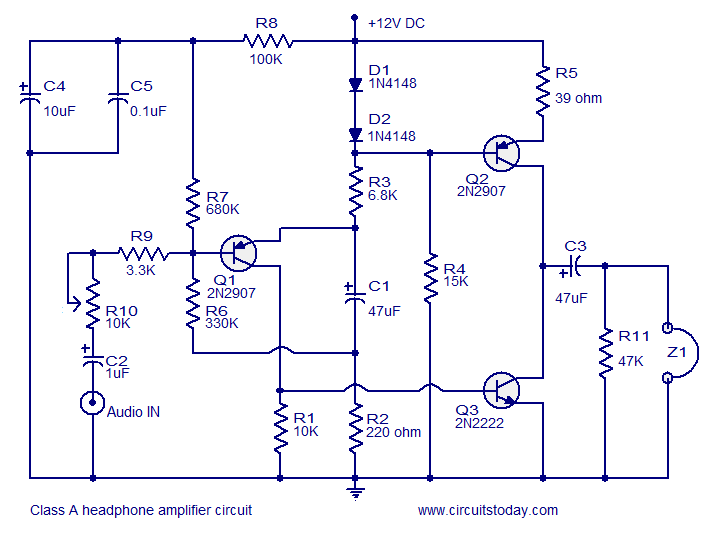
Power amplifier 60W Class A
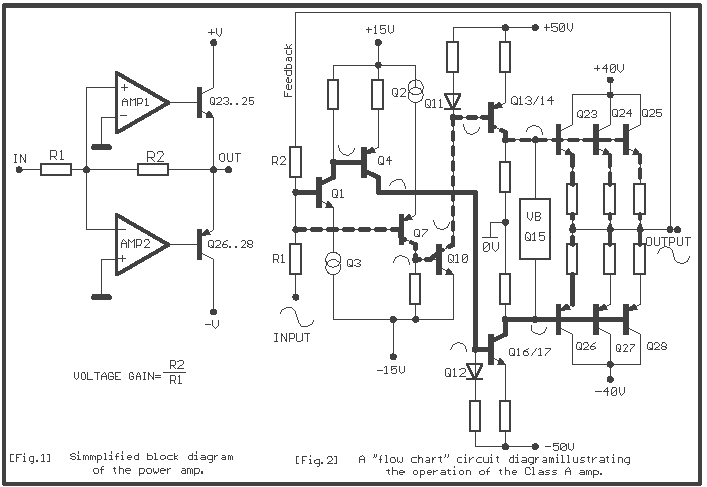
The simplified circuit [Fig.2] shows that each sub-amplifier consists of two voltage gain stages. The first stage consists of a complementary two stage common emitter [Q1-7] whose gain is about x2.3. The second stage is a current mirror stage [Q13-14] which drives the voltage across a load resistor tied to 0V.
Expanding on this, the sub-amplifier is a key component in the circuit, with each one featuring two distinct voltage gain stages. This structure enhances the amplification power of the circuit, allowing it to effectively magnify the input signal.
The first stage of the sub-amplifier is a complementary two-stage common emitter, denoted as Q1-7 in the circuit diagram. The common emitter configuration is widely utilized in amplifier circuits due to its ability to provide good voltage gain. In this particular circuit, the gain is approximately x2.3. This means that the output signal from this stage will be 2.3 times larger than the input signal.
Following this, the second stage of the sub-amplifier is a current mirror stage, labeled as Q13-14. A current mirror is a circuit designed to copy a current through one active device by controlling the current in another active device of a circuit, keeping the output current constant regardless of loading. The purpose of this stage in the circuit is to drive the voltage across a load resistor that is connected to 0V, also known as ground. This stage is crucial for maintaining the stability of the output signal and ensuring that it is not affected by any potential fluctuations in the input signal.
In conclusion, the circuit in question is a well-designed amplifier system that employs a two-stage amplification process to effectively increase the power of the input signal. The use of a common emitter and a current mirror stage allows for a high degree of control over the output signal, ensuring its stability and consistency.The simplified circuit [Fig.2] shows that each sub-amplifier consists of two voltage gain stages. The first stage consists of a complementary two stage common emitter [Q1-7] whose gain is about x2.3. The second stage is a current mirror stage [Q13-14] which drives the voltage across a load resistor tied to 0V.
🔗 External reference
Expanding on this, the sub-amplifier is a key component in the circuit, with each one featuring two distinct voltage gain stages. This structure enhances the amplification power of the circuit, allowing it to effectively magnify the input signal.
The first stage of the sub-amplifier is a complementary two-stage common emitter, denoted as Q1-7 in the circuit diagram. The common emitter configuration is widely utilized in amplifier circuits due to its ability to provide good voltage gain. In this particular circuit, the gain is approximately x2.3. This means that the output signal from this stage will be 2.3 times larger than the input signal.
Following this, the second stage of the sub-amplifier is a current mirror stage, labeled as Q13-14. A current mirror is a circuit designed to copy a current through one active device by controlling the current in another active device of a circuit, keeping the output current constant regardless of loading. The purpose of this stage in the circuit is to drive the voltage across a load resistor that is connected to 0V, also known as ground. This stage is crucial for maintaining the stability of the output signal and ensuring that it is not affected by any potential fluctuations in the input signal.
In conclusion, the circuit in question is a well-designed amplifier system that employs a two-stage amplification process to effectively increase the power of the input signal. The use of a common emitter and a current mirror stage allows for a high degree of control over the output signal, ensuring its stability and consistency.The simplified circuit [Fig.2] shows that each sub-amplifier consists of two voltage gain stages. The first stage consists of a complementary two stage common emitter [Q1-7] whose gain is about x2.3. The second stage is a current mirror stage [Q13-14] which drives the voltage across a load resistor tied to 0V.
🔗 External reference
